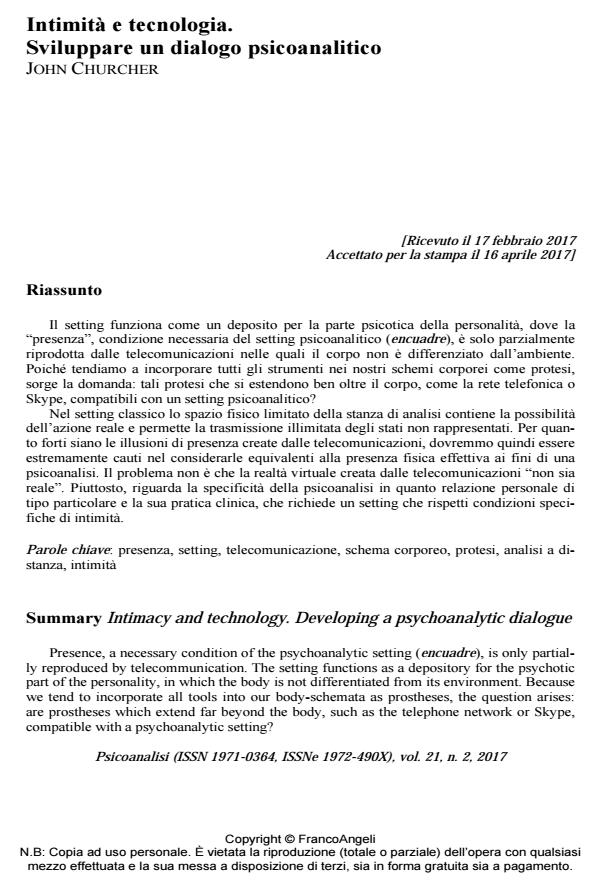Intimacy and technology. Developing a psychoanalytic dialogue
Journal title PSICOANALISI
Author/s John Churcher
Publishing Year 2018 Issue 2017/2
Language Italian Pages 7 P. 61-68 File size 143 KB
DOI 10.3280/PSI2017-002006
DOI is like a bar code for intellectual property: to have more infomation
click here
Below, you can see the article first page
If you want to buy this article in PDF format, you can do it, following the instructions to buy download credits

FrancoAngeli is member of Publishers International Linking Association, Inc (PILA), a not-for-profit association which run the CrossRef service enabling links to and from online scholarly content.
In the classical setting the limited physical space of the consulting room contains the possibility of real action and allows unrestricted transmission of unrepresented states. However strong the illusions of presence created by telecommunications, we should therefore be extremely cautious about treating them as equivalent to real, physical presence for the purposes of psychoanalysis. The problem is not that the virtual reality created by telecommunication is "not real". Rather, it concerns the specificity of psychoanalysis as a peculiar kind of personal relationship and clinical practice, and one which requires a setting that meets specific conditions of intimacy.
Keywords: Presence, setting, telecommunication, body-schema, prosthesis, remote analysis, intimacy
John Churcher, Intimità e tecnologia. Sviluppare un dialogo psicoanalitico in "PSICOANALISI" 2/2017, pp 61-68, DOI: 10.3280/PSI2017-002006